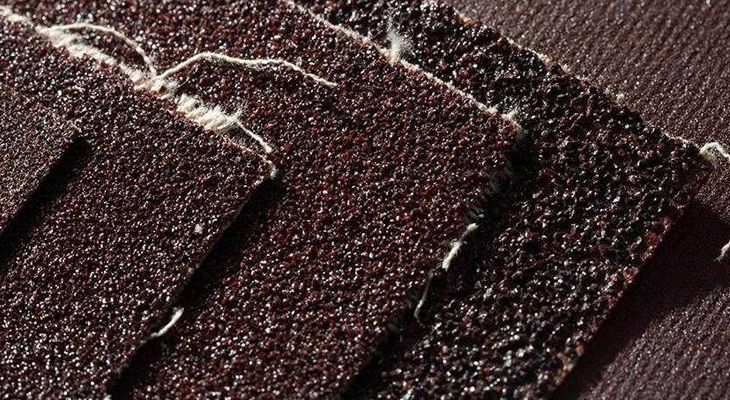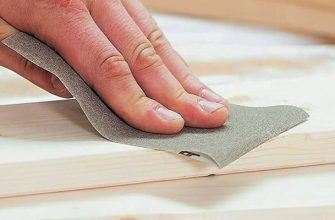Sanding is an extremely beneficial technique that can significantly impact a woodcarving, metalworking, or drywall task. To attain the optimum polish on such materials, sanding can be done manually and in conjunction with power tools like electric sanders.
Sanding, on the contrary, is ideal for wood carving and finishing, particularly when it comes to offering surfaces a softer touch. Sanding with power tools speeds up the scraping process while also trying to shape and level the wood. It’s also used to get metals ready for painting.
Sandpaper has many sharp corners, which can be trimmed into metal or wood. The abrasive corners are glued with a bonding agent to a backing substance, including Kraft paper. Distinct sandpaper grades symbolize the effectiveness of the abrasives, backing substances, and adhesives.
Industrial-grade sandpaper is made from higher-quality materials than ordinary sandpaper, but it is only accessible in certain shops. Furthermore, the grit size of sandpaper, or the number of pointed particles for every square inch of sandpaper, is evaluated.
The greater the grit size, the corners as well as the sandpaper become softer. The density of the grit is also essential. Open-coated sandpaper really does have gaps between the grits that enable sawdust to collect and not interact with sanding, even though closed-coated sandpaper does not.
The Power-Sanding Sandpaper is available in sheets, buckles, and discs. Irrespective of whether your usage necessitates hand-sanding or power-sanding, understanding the differences between sandpaper grades is critical to successfully accomplishing a sanding implementation. Make sure you wisely use our sandpaper grit chart by paying attention to the differences in grade levels and materials.
- So, what is the purpose of 2000 grit sandpaper?
- What is the meaning of the grit number on sandpaper?
- What are the various types of sandpaper forms?
- What Is the Difference Between Sandpaper Grit and Grade?
- How to choose the grit size of a sandpaper?
- How many types of sandpapers?
- What is the purpose of 3000 grit sandpaper?
- Is grit 2000 sandpaper sufficient?
- What is the purpose of 5000 grit sandpaper?
- Can you prime 400 grit sandpaper?
- How to understand when the sandpaper is worn out?
- What type of sandpaper can I use when sanding my car?
- What could I substitute for 1000 grit sandpaper?
- Is a smoother grit the greater grit?
- Can sandpaper be used to wash headlights?
- What is the greatest sandpaper grade?
- What is the sandpaper with the smoothest grit?
- What is the greatest grit of wood sandpaper?
- Will a clear coat hide scratches with a grit of 400?
- Is it necessary to sand when I use primer?
- Final Words
So, what is the purpose of 2000 grit sandpaper?
You can polish a clear coat as well as paint and restore shine with the help of 2000 grit. It is certainly ideal for scraping light paint texture and attempting to remove light scratch marks in a clear coat.
It is normal to have the clear coat sanded with 1,500 and 2,000 grit sandpaper. Both grits are excellent for attempting to remove gentle smooth finish scrapes that cannot be removed by gently rubbing substance and polishing.
What is the meaning of the grit number on sandpaper?
Sandpaper grit is a measurement of the diameter of the rigid materials, mostly on sandpaper. The greater the grit number, the finer the abrasive, and thus the softer the surface finish. Lesser grit numbers reflect rougher abrasives that scratch substances off much faster.
The grit is evaluated in the graph below using both the CAMI (Coated Abrasives Manufacturing Institute) and FEPA (Federation of European Producers of Abrasives) benchmarks. That is indeed usually accompanied by a “P.”
- 40-grit (CAMI) sandpaper precisely coincides with (FEPA) P-36 or P-40
- 80-grit (CAMI) sandpaper precisely coincides with (FEPA) P-80 or F-100
- 100-grit (CAMI) sandpaper precisely coincides with (FEPA) P-100 or P-120
- 120-grit (CAMI) sandpaper precisely coincides with (FEPA) P-120 or P-150
- 220-grit (CAMI) sandpaper precisely coincides with (FEPA) P-180 or P-220
- 400-grit (CAMI) sandpaper precisely coincides with (FEPA) P-600 or P-800
There are two major sandpaper grit groups: micro and macro, with numerous gradients in between.
- Micro Grit Sandpaper
Micro grit abrasives are a type of finer abrasive. They have grit numbers that are greater. Micro grit sandpapers are frequently included with wood, as well as, to a lesser extent, drywall.
- Macro Grit Sandpaper
Macro grits are abrasives that typically range from medium to rough sandpaper. They have grit ratings ranging from medium to minimal. Macro grit sandpapers also have a higher clearance. They are generally for use on tougher woods and metals.
What are the various types of sandpaper forms?
Aside from grits and grades, sandpaper is produced from a mixture of chemically diverse materials. It could be made from garnet grains or synthetic materials such as silicon carbide, aluminum oxide, alumina-zirconia, etc. Regardless of the sandpaper you use, there has to be a deep connection between both the grit and the backing substance.
When it does not, the grit and backing substance could detach while in use, causing your implementation to fail. Sandpaper backing materials include cloth, cotton, paper, polyester, rubber, rayon, and PET film. Mylar is a material that is used as a backing for incredibly fine grits.
What Is the Difference Between Sandpaper Grit and Grade?
Grit size basically indicates the specific size of the abrasive grain: 36, 60, 120, etc., whereas grade is a broader term that includes a range of grits within each grade. For instance, medium grade involves grit sizes ranging from 80 to 150.
How to choose the grit size of a sandpaper?
The grit size of the sandpaper you use should be determined by the task at hand. For heavy sanding and stripping, use 40-to 60 grit sandpaper; for softening surfaces and reducing minor defects, use 80 to 120 grit sandpaper. Use a super fine sandpaper with a grit range of 360 to 600 to smooth out surfaces.
Many jobs require you to work your way over the grits. This implies that you begin the task with a coarser grit of sandpaper and advance to a finer grit of sandpaper as you go. As you progress to a larger grit of sandpaper, you eliminate scrapes from the preceding layer.
How many types of sandpapers?
Sandpaper grits are classified into four types: aluminum oxide, ceramic, garnet, and silicon carbide. Since it has a self-renewing estate, aluminum oxide requires more maintenance than other types of grit. As this is the most subtle, it starts to crumble quickly, establishing new soft edges. Garnet is the quickest to wear out but generates the softest surface. Silicon carbide is excellent for sanding tougher materials like metals and plastics. Eventually, the most costly and roughest grit is ceramic, which is also used to shape wood.
What is the purpose of 3000 grit sandpaper?
Sandpaper with a grit of 1000 to 1200 can be used for light sanding in both coats of finish as well as to sand metal or other hard surfaces. Sandpaper with grits ranging from 2000 to 3000 can be used for polishing.
Is grit 2000 sandpaper sufficient?
The grit of a fine quality sandpaper generally ranges from 120 to 220 grit. For both layers of paint or varnish, extremely fine sandpaper is frequently used. Very fine sheets have grits of 240, 320, and 400. The extra or superfine sheets with a grit of approximately 600 are particularly suitable for buffing tasks.
What is the purpose of 5000 grit sandpaper?
This 5000 grit sheet could be used to modify 3000 grit scrapes and achieve a fine-grained finish, lowering or indeed removing the need to finish paint by trying to rub substance. Useful for trying to remove 3000 grade sand scrapes from painted surfaces before buffing.
Can you prime 400 grit sandpaper?
The finest grit sandpaper used when sanding an outer layer prior to actually implementing primer ranges from 320 to 400. Each of these grits is efficient at eliminating existing primer as well as flattening the exterior surface.
How to understand when the sandpaper is worn out?
The simplest way to visualize whenever it’s important to switch the sandpaper is to softly operate your finger over the section of the paper you have used, then do the same over a section that is still new – say, the part enclosed with a sanding block.
What type of sandpaper can I use when sanding my car?
Dry sand with 180 grit sandpaper to eliminate rust or surface harm prior to actually progressing on to 320 grit paper to remove the scrapes left by the 180 grit sandpaper. Regardless of which technique you choose, you must sand the paint with 400 to 600 grit sandpaper to prepare the existing paint surface for the new coatings to be implemented.
What could I substitute for 1000 grit sandpaper?
Below are listed some of the excellent choices for sandpaper:
- Sand and a piece of leather or cloth.
- Pumice (a porous volcanic rock).
- Walnut Shells.
- Rottenstone (similar to Pumice).
- Wood Shavings.
- Corn Cobs.
- A Wood File.
- Scraping, burnishing, or even making a primitive sanding tool.
Is a smoother grit the greater grit?
Sandpaper grit is a measurement of the magnitude of the abrasive materials on the sandpaper. The greater the grit multitude, the finer the abrasive and, thus, the softer the surface finish. Lesser grit numbers indicate rougher abrasives that scratch substances off much faster.
Can sandpaper be used to wash headlights?
In brief, whenever it comes to headlamp revival, you will need to use 400 to 600 grit silicon carbide sandpaper to eliminate the initial layer of oxidation from the headlights. Then, for the best possible finish, use an 800 to 1000 grit followed by a 3000 to 5000 grit.
What is the greatest sandpaper grade?
The higher the number, the coarser the grit. Sandpaper is generally categorized as below:
- Coarse (40 to 60 grit)
- Medium (80 to 120 grit)
- Fine (150 to 180 grit)
- Very fine (220 to 240 grit)
- Extra fine (280 to 320 grit)
- Super fine (280 to 320 grit)
- The 360-grit and above.
What is the sandpaper with the smoothest grit?
Garnet sandpaper has the softest grit and wears out the quickest, while producing the softest surface.
What is the greatest grit of wood sandpaper?
Finish sanding with 120 grit will generally resolve the issue with “hard to stain” woods. Often, these furniture hardwoods (such as cherry and mahogany) require 180 grit or 220 grit finishing sanding. The use of grits up to 600 is surely permissible, but it is not a routine trend.
Will a clear coat hide scratches with a grit of 400?
If you notice any scrapes bigger than 320-400 (if you really can experience them with your hand or finger nail, they are too intense). As users apply multiple coats of base color and clear coat, those really minimal deficiencies will fade away, and thus you won’t have to worry.
Is it necessary to sand when I use primer?
Sand the primer before you apply the paint to the wall. It is advised that one must sand between both the paint coats for a professional finish.
Final Words
We hope that we were able to answer your question.









